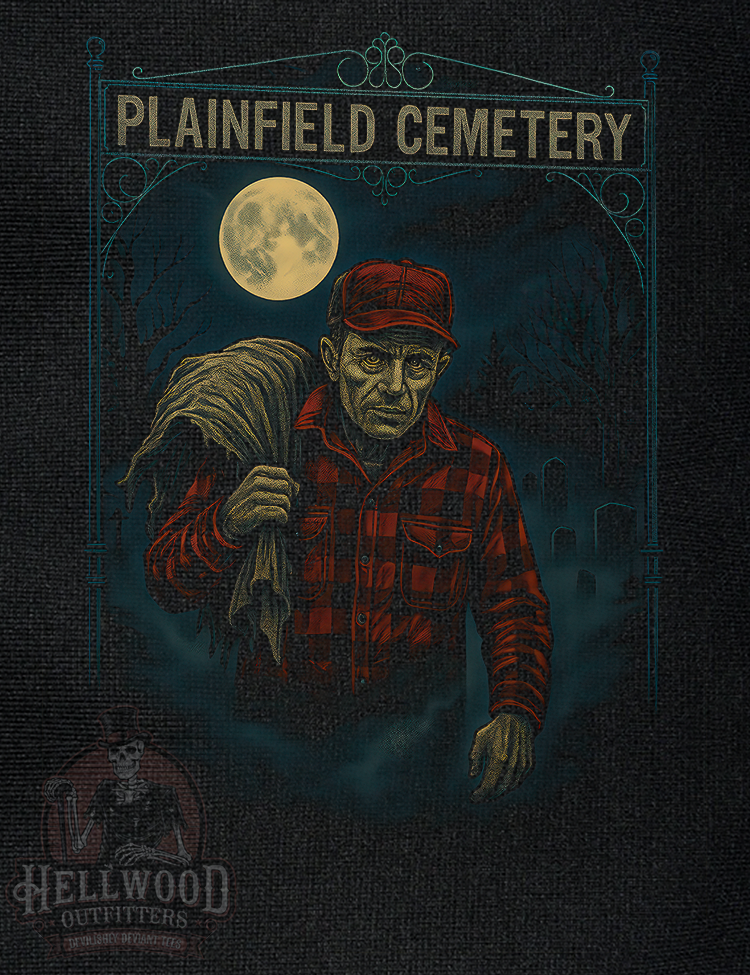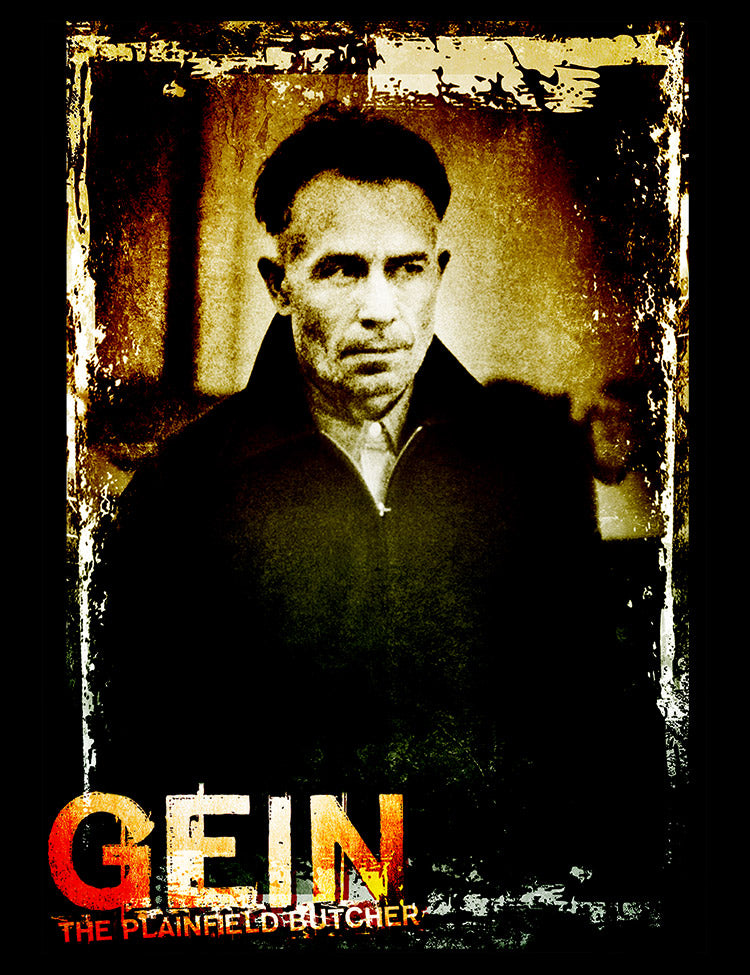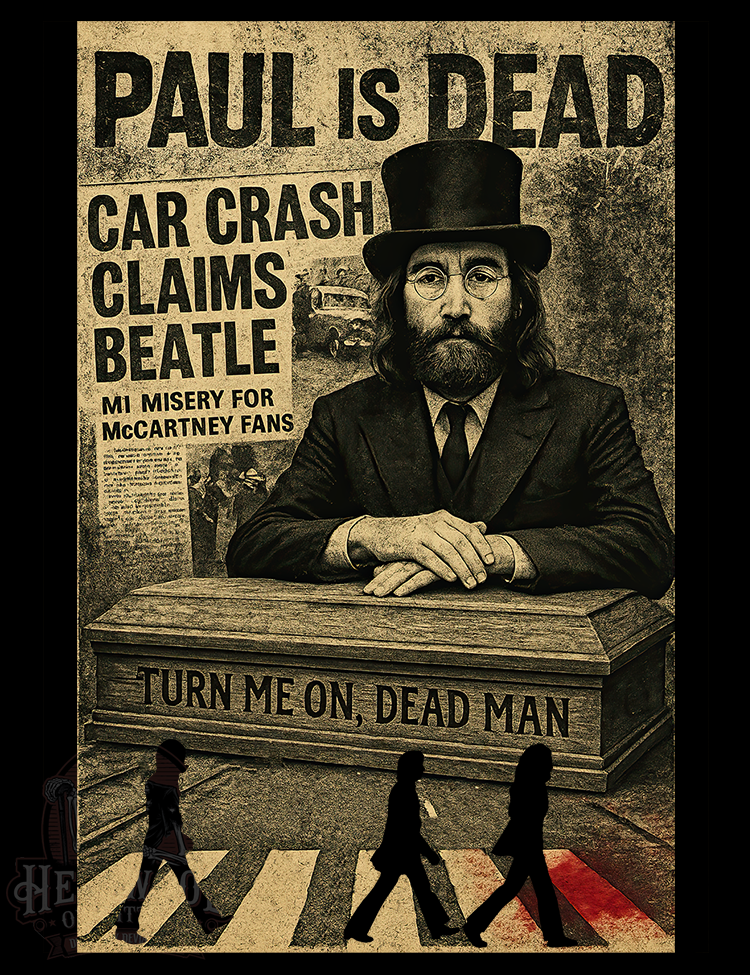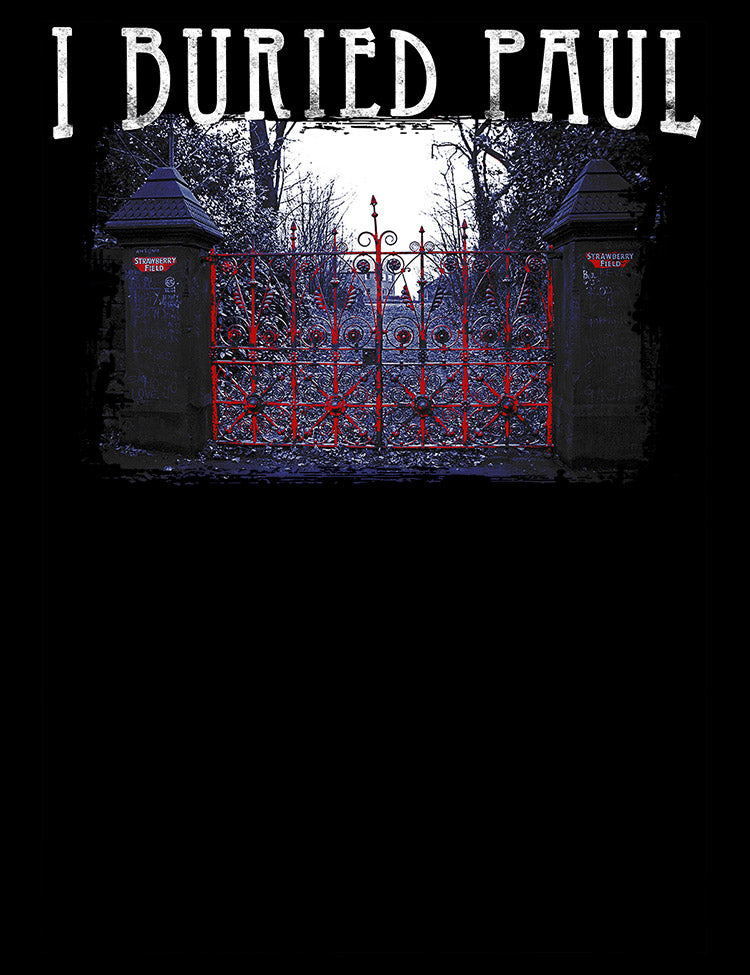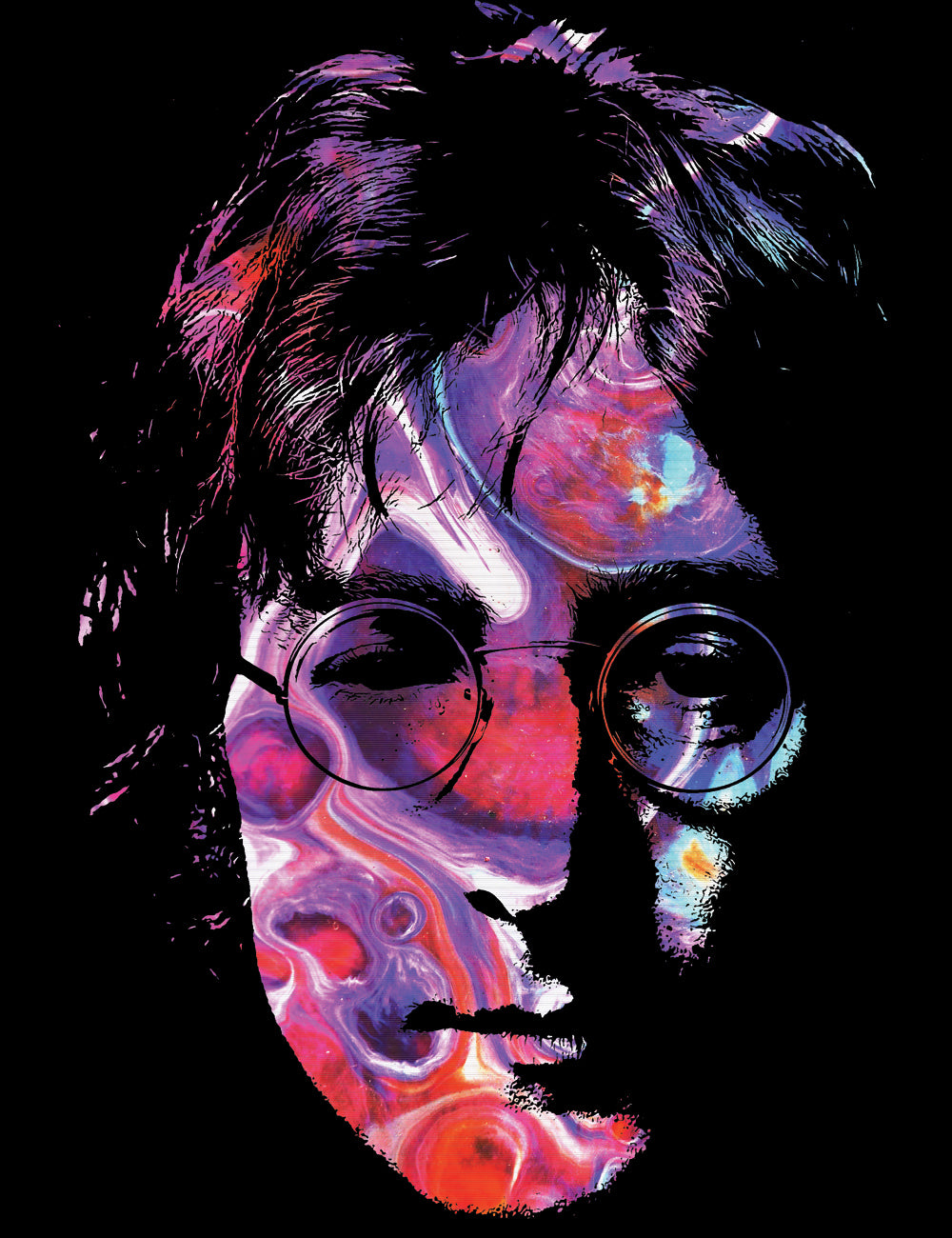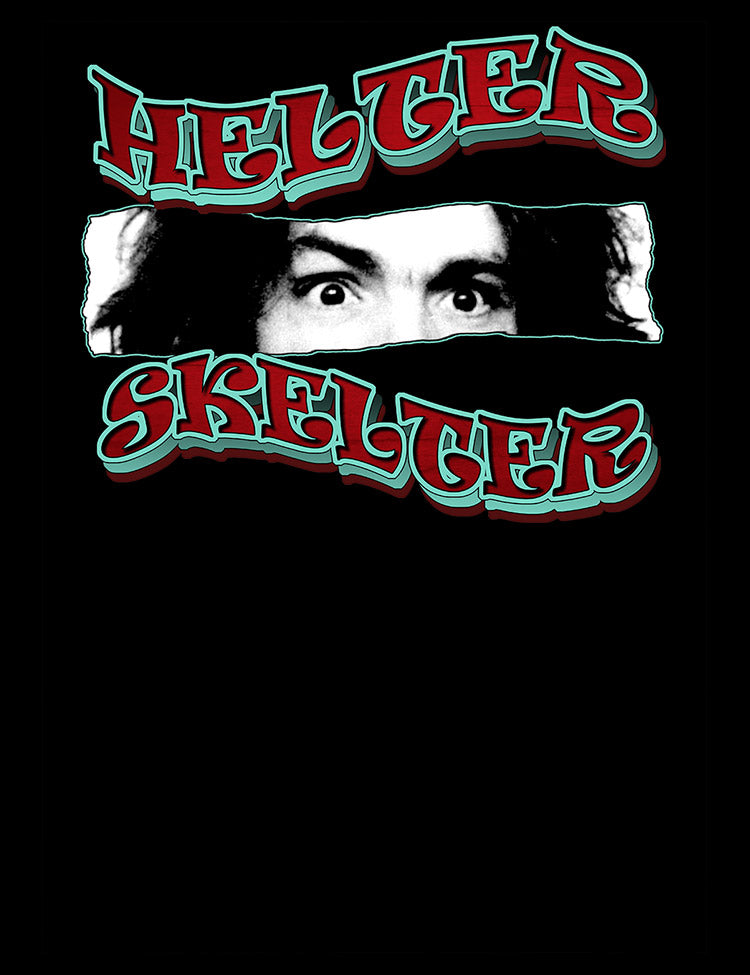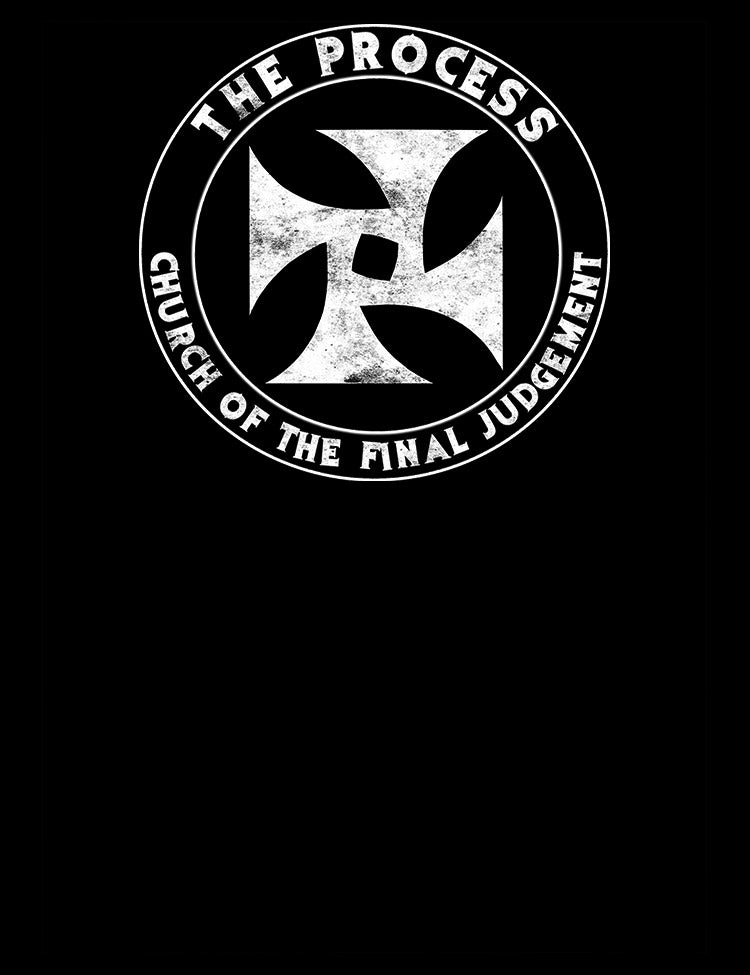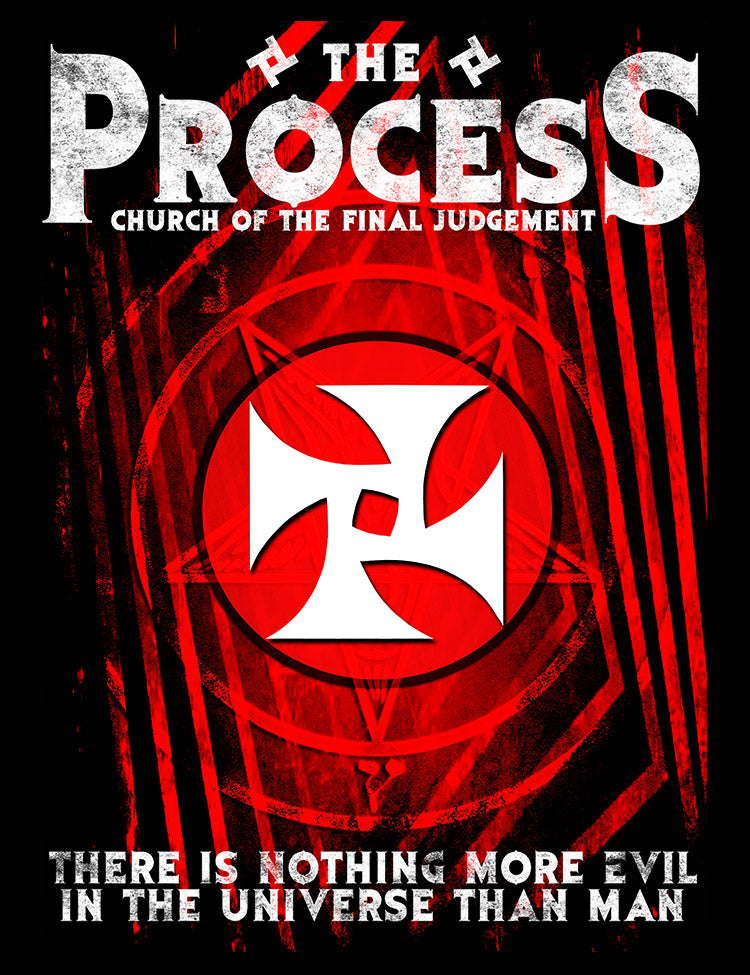
Paul is Dead: The Ultimate Breakdown of the Most Enduring Beatles Conspiracy
Introduction
The Beatles are the most scrutinized band in history. But no story attached to the Fab Four is as bizarre, labyrinthine, or persistent as the “Paul is dead” conspiracy theory—the strange belief that Paul McCartney died in 1966 and was replaced by a lookalike.
What began as a campus prank snowballed into a global phenomenon, with thousands scrutinizing Beatles albums for hidden clues, searching for “confessions” in song lyrics, and even believing in a government-orchestrated cover-up.
This article will unravel every aspect of the conspiracy—examining the “evidence,” the psychology, the cast of characters, and the legacy of an idea that refuses to die, even decades later.
“It’s the greatest urban legend in rock history—part riddle, part pop-culture puzzle, and a testament to the Beatles’ mythic status.”
—Mark Lewisohn, Beatles historian
Origins of the “Paul is Dead” Conspiracy
The Accident That Never Happened
The heart of the theory is elegantly simple:
On the morning of Wednesday, November 9, 1966, Paul McCartney died in a fiery car crash. The story goes that the Beatles’ management, fearing public hysteria and financial ruin, secretly replaced him with a double—variously named William Campbell or Billy Shears, depending on which version you believe.
The band, wracked with guilt, supposedly began leaving cryptic clues about Paul’s fate in their songs, artwork, and interviews.
This narrative, though outlandish, has been told and retold in thousands of variations—so many, in fact, that it’s often hard to know where the myth ends and the facts begin.
The Rise of the Rumor
The earliest known whispers of Paul’s death can be traced to 1967, but the theory truly caught fire in 1969. On October 12 of that year, a caller to Detroit radio DJ Russ Gibb’s show claimed Paul had died and pointed to clues on Sgt. Pepper and Abbey Road. The rumor spread like wildfire, amplified by college newspapers and underground magazines.
Within weeks, “Paul is dead” became a campus obsession, with students poring over Beatles albums for hidden meanings, symbols, and supposed admissions of guilt.
“Once the story hit, it was like a fever. I was getting hundreds of letters, calls, and tapes every day. People wanted to believe. It was the perfect Beatles mystery.”
—Russ Gibb, in The Beatles Anthology
Main Characters and Players
Paul McCartney
The “victim” at the center of the storm, Paul is—by all reliable accounts—alive and well. He has often poked fun at the theory, sometimes fueling it with a wry sense of humor.
The Beatles: John, George, Ringo
Each of the remaining Beatles became, in the eyes of theorists, co-conspirators in the cover-up.
-
John Lennon: Often cast as the ringleader, planting the most overt “clues” in his lyrics and interviews.
-
George Harrison: Seen as the quiet participant, but also suspected of slyly referencing the “truth” in song.
-
Ringo Starr: The “weakest link,” supposedly uncomfortable with the deception and sometimes hinting at his discomfort.
Billy Shears/William Campbell
The man who “became Paul.” According to the legend, William Campbell, a Scottish or Canadian musician who won a Paul McCartney lookalike contest, was recruited by MI5 and trained to impersonate the Beatle in voice, mannerisms, and musicianship.
Other aliases for the replacement include Billy Shears (from Sgt. Pepper), Phil Ackrill, and even a wax dummy.
Key Fans, Journalists, and Academic Voices
-
Fred LaBour: University of Michigan student whose 1969 satirical article “McCartney Dead; New Evidence Brought to Light” in the Michigan Daily was a major accelerant.
-
Russ Gibb: Detroit DJ who first broadcast the theory.
-
Andru J. Reeve, Joel Glazier, R. Gary Patterson: Later writers and researchers who catalogued “clues.”
-
Mark Lewisohn: Beatles historian, often debunking the theory with painstaking research.
The “Evidence” and Key Claims
The “Paul is dead” theory is built on a dazzling array of supposed clues—some visual, some audio, some buried in lyrics. Most are coincidences or the result of overzealous interpretation, but taken together, they form an alternate narrative that has fascinated and entertained millions.
Album Clues
The theory’s adherents claim that the Beatles—riddled with guilt and unable to speak openly—began leaving coded messages about Paul’s fate on album covers, in lyrics, and in backwards recordings.
These clues can be divided into several categories:
-
Visual clues: Album covers, photographs, insert booklets.
-
Lyrical clues: Lines that supposedly allude to death, replacement, or mourning.
-
Backmasking/Audio clues: Words or phrases allegedly heard when tracks are played backward.
-
Behavioral clues: Odd interviews, statements, or musical choices interpreted as “hints.”
Lyrics, Album Art, and Backmasking
The theory’s sleuths believe that the Beatles wove a tapestry of “confessions” across multiple albums, creating a massive puzzle for fans to solve.
Media and “Official” Statements
The Beatles’ own responses—often ironic or tongue-in-cheek—have fueled speculation. Press officers, road managers, and even supposed MI5 agents have been dragged into the saga as shadowy orchestrators or whistleblowers.
Album-by-Album Breakdown: The “Clues”
Below is an album-by-album account of the main (and obscure) clues. Most are the product of intense scrutiny, over-interpretation, or deliberate pranks by fans, but all have become canon in “Paul is dead” mythology.
Revolver (1966)
Although Revolver pre-dates the “accident,” some conspiracy theorists see it as the beginning of the band’s “preparation” for Paul’s departure.
Key Claims:
-
“She Said She Said”—alleged references to death and existential crisis.
-
The album cover (by Klaus Voormann) features a stylized, fragmented image of the Beatles, with Paul’s profile facing away from the others.
Fan Analysis:
Little direct evidence, but viewed retrospectively as the beginning of a shift in the band’s tone.
Sgt. Pepper’s Lonely Hearts Club Band (1967)
The goldmine of “clues.” The theory holds that Sgt. Pepper is both a funeral for Paul and an introduction for his replacement (“Billy Shears”).
Album Cover:
-
The Beatles are dressed in military-style band uniforms, standing before a floral arrangement in the shape of a left-handed bass (Paul’s instrument).
-
A hand (belonging to the “guru” in the wax figures) hovers above Paul’s head—a symbol of death in Eastern mysticism.
-
Paul holds a black cor anglais, while the other Beatles hold brass instruments.
-
Paul wears a patch reading “OPD”—interpreted as “Officially Pronounced Dead” (actually “Ontario Provincial Police”).
-
A doll sits on the right, holding a toy car on her lap—said to reference Paul’s fatal accident.
Lyrics:
-
“He blew his mind out in a car…” (“A Day in the Life”)—interpreted as a direct reference to Paul’s crash.
-
“Billy Shears” is introduced as the new frontman.
Insert Clues:
-
On the back cover, Paul faces away from the camera, while the others face forward.
-
Paul is the only Beatle holding a black instrument (death symbolism).
Fan Analysis:
Thousands of fans wrote to newspapers and radio stations, cataloging dozens of visual and lyrical “clues.”
Magical Mystery Tour (1967)
The album and film are packed with odd imagery, interpreted as part of the ongoing “confession.”
Album Cover:
-
Paul is dressed as a walrus—a symbol of death in some mythologies (though actually a Lennon in-joke).
-
On the inner booklet, Paul is not wearing shoes or a name tag in several images.
“I Am the Walrus”:
-
The lyric “I am the walrus” was cited as a confession; later, in Glass Onion, Lennon sings, “The Walrus was Paul.”
-
At the end of the song, a radio play excerpt says, “Sit you down, Father, rest you.”
Film Clues:
-
In one scene, Paul is the only Beatle wearing a black flower on his lapel.
The Beatles (White Album, 1968)
Audio Clues:
-
In “Glass Onion,” John sings, “Here’s another clue for you all: The walrus was Paul.”
-
The end of “I’m So Tired,” played backwards, is said to reveal John saying, “Paul is dead, man, miss him, miss him, miss him.”
Visual Clues:
-
In the “Revolution 9” sound collage, backward-masked phrases allegedly say, “Turn me on, dead man.”
-
The song “Don’t Pass Me By” (written by Ringo) includes, “You were in a car crash and you lost your hair.”
Yellow Submarine (1969)
Cartoon Imagery:
-
Paul is often depicted in blue or without shoes, said to indicate he is “not of this world.”
Abbey Road (1969)
The Abbey Road cover is perhaps the most widely cited “evidence” in the theory.
Album Cover:
-
The four Beatles cross the street in a line, with Paul barefoot (supposedly a funeral tradition in some cultures).
-
Paul is out of step with the others and holding a cigarette in his right hand (he is left-handed).
-
John, dressed in white, represents a preacher; Ringo, in black, the undertaker; Paul, the corpse; George, in denim, the gravedigger.
-
A Volkswagen Beetle’s license plate reads “28IF”—said to refer to Paul’s age “if” he had lived (he was actually 27 at the time).
Back Cover:
-
A series of dots above the Beatles’ heads may spell out “3 Beatles.”
-
A woman in a blue dress (in the background) was rumored to be a mourner.
Let It Be (1970)
Album Cover:
-
Paul’s image is bordered in blood red, while the others are bordered in white.
-
Paul faces away from the others, or is placed lower in the arrangement.
Song Clues:
-
“The Long and Winding Road” is interpreted as a metaphor for the band’s journey after Paul’s death.
Alternative Theories, Variations, and Key Subplots
The Double Theory: Billy Shears/William Campbell
This is the backbone of the theory: Paul’s doppelgänger, who underwent plastic surgery and intensive training to step into the biggest shoes in pop history.
Details of Campbell’s background change from version to version, but he is usually depicted as a talented musician who won a lookalike contest, then vanished.
“Billy Shears” is named in the opening of Sgt. Pepper—a supposed public introduction of the new Paul.
Involvement of MI5, the Vatican, and Others
Some theorists believe MI5 (the British security service) masterminded the cover-up, fearing mass suicides if Paul’s death were revealed.
Others drag the Vatican, the Illuminati, or even extraterrestrials into the narrative, especially in fringe publications and online forums.
Parody and Meta-Commentary
John Lennon, in particular, delighted in toying with the rumor.
-
The White Album’s “Glass Onion” was intended to poke fun at clue-hunting.
-
Lennon’s Live Peace in Toronto album cover parodied the “clues.”
Paul McCartney Responds
The Life Magazine Interview
In November 1969, after months of public speculation and even trespassing fans at his farm, McCartney granted an interview to Life magazine. He appeared, bearded and healthy, with his family.
“Perhaps the rumor started because I haven’t been much in the press lately. I’m alive and well and concerned about the rumors of my death. But, if I were dead, I’m sure I’d be the last to know.”
—Paul McCartney, Life, November 1969
The interview did little to end the speculation. To many, McCartney’s statement was itself suspiciously evasive.
Later Jokes and References
-
Paul titled his 1993 live album Paul Is Live, with a cover parodying Abbey Road.
-
In interviews, he’s often quipped, “If I’m dead, I must be the luckiest dead man alive.”
-
McCartney’s music video for “Coming Up” (1980) features him playing multiple roles, a wink to the idea of doubles.
The Beatles, The Process Church, Charles Manson, and Ian Iachimoe: Tangled Webs of Myth and Conspiracy
The Process Church of the Final Judgment: Occult Shadows in Beatles Lore
Who Were the Process Church?
The Process Church of the Final Judgment was an occult sect formed in the mid-1960s in London by Mary Ann and Robert de Grimston. Its theology fused apocalyptic Christianity, Satanism, and esoteric ideas, often depicted in public wearing black robes and bearing a stylized “P” emblem. With a focus on dualities—Christ and Satan, Jehovah and Lucifer—the Process cultivated an aura of mystery and fear, drawing the suspicion of media and authorities in both the UK and US.
Beatles Connections: Theories and Hints
Rumors have long swirled that the Beatles were aware of, or even subtly affiliated with, the Process Church. These theories, though thinly sourced, revolve around several points:
-
Sgt. Pepper's Lonely Hearts Club Band Album Cover:
On the famous cover, the faces of various cultural figures are visible—including Aleister Crowley, the notorious British occultist who was a significant influence on the Process. Conspiracists have claimed that some of the more obscure faces in the collage may be Process Church members, but this is unsubstantiated. -
Lyric Allusions:
Some theorists have pointed to “Helter Skelter” and the White Album’s other more chaotic, apocalyptic songs as echoing Process theology about the coming end-times and the unity of opposites. -
London Underground Scene:
The Beatles, especially in 1966-1967, were regulars in the London avant-garde and countercultural scene, which did overlap with Process figures. Some Process members reportedly attended Beatles recording sessions at Abbey Road as hangers-on or were seen at the Indica Gallery (where John met Yoko). -
The “Paul is Dead” Layer:
A few fringier “Paul is dead” theorists believe the Process was somehow involved in the cover-up or mind control, spinning a web that ties in Tavistock, MI5, and other favorite conspiracy touchstones. No credible evidence supports this, but the idea persists on some forums.
The Reality
While the Beatles moved in some of the same 1960s counterculture circles, there is no reliable evidence that the Beatles were formally associated with the Process Church or its rituals. John Lennon was famously dismissive of most cults and “gurus” after his initial enthusiasm for the Maharishi Mahesh Yogi faded.
“If you look hard enough at any pop culture phenomenon from the Sixties, you can draw a line to the Process. But the Beatles themselves were never members, never endorsed the group, and—if anything—kept a wary distance from any organization with messianic or authoritarian leanings.”
—Simon Wells, The Process: A History of the Final Judgement
Charles Manson, “Helter Skelter,” and the Beatles’ Music
The Manson Connection
Charles Manson, the infamous cult leader and orchestrator of the 1969 Tate-LaBianca murders, fixated on the Beatles—particularly the White Album. Manson believed the group’s music contained coded messages predicting a coming apocalyptic race war he dubbed “Helter Skelter.”
He saw himself as a messianic figure, supposedly in communication with the Beatles through their records, which he interpreted as prophetic instructions.
The White Album’s “Clues”
-
“Helter Skelter”:
For Manson, this song foretold a coming chaos. Paul, who wrote the track, simply meant it as a metaphor for a playground slide—a symbol of rock’n’roll energy. -
“Piggies” (George Harrison):
Manson interpreted this as an incitement to kill “the establishment.” -
“Revolution 9”:
Manson and his followers played this sound collage backwards, convinced it predicted violence and revolution. -
“Blackbird”:
Interpreted as a call to African Americans to rise up.
Theories and Rumors
-
Some “Paul is dead” theorists claim that Manson’s obsession stemmed from a deeper occult conspiracy, that the Beatles intentionally laced their records with messages for the “initiated”—a claim completely rejected by the band.
-
The Process Church was also rumored to have inspired Manson, and there were real-life interactions (members visited his desert compound), but no proven links to the Beatles themselves.
“The whole ‘Helter Skelter’ business was Manson’s craziness, nothing to do with us. The song was just about a fairground slide, for God’s sake.”
—Paul McCartney, 1985
Impact on Beatles Mythology
The Manson connection gave a sinister cast to the Beatles’ late 60s work, and for conspiracy-minded fans, reinforced the idea that the band’s music hid secret messages—whether intended or not. It also cemented the Beatles’ transition from lovable mop-tops to avatars of a darker cultural moment.
Ian Iachimoe: The Mysterious Name in the Margins
Who is Ian Iachimoe?
Ian Iachimoe is an enigmatic figure who appears, cryptically, in Beatles-related discussions—primarily as a pseudonym or playful in-joke.
Origin:
The name first appears in the credits for the 1965 film Help! In a scene featuring the cult that is after Ringo’s ring, the villain’s script includes the name “Ian Iachimoe.” In fact, “Iachimoe” is “McCartney” written backwards (sort of: "Iam Eochim" is an anagram of "I am he [who is] Mc [Cartney]"). Some have argued it's "McCartney" backwards or scrambled, while others suggest it’s just a playful bit of nonsense.
Theories and Significance
-
Some “Paul is dead” adherents believe “Ian Iachimoe” is an alter ego for the post-1966 “fake” Paul, or a code name used in the cover-up.
-
Others suggest it was used as a songwriting pseudonym, like Lennon/McCartney, to signal collaboration or duality.
-
Occasionally, it has been cited as an in-joke to suggest that “Paul” was never quite who he seemed.
Reality and Context
-
There is no real Ian Iachimoe; the name is a joke and a wordplay typical of the Beatles’ humor.
-
McCartney did use several other pseudonyms throughout his career (e.g., “Apollo C. Vermouth” for producing, “Percy Thrillington”), but none as a signifier of a secret identity.
-
The fact that the name is playful, obscure, and self-referential made it catnip for conspiracy theorists eager for hidden meanings.
The rumors about the Beatles’ links to the Process Church and Charles Manson, as well as the mysterious “Ian Iachimoe,” are examples of how the group’s cultural status has encouraged layers of myth-making and speculation. The real connections are more mundane—overlapping social scenes, artistic experimentation, and wordplay—but the myths persist because they speak to our desire for secrets, puzzles, and grand narratives.
If anything, these stories reinforce the enduring mystique of the Beatles: their work is a mirror for our own cultural anxieties, hopes, and fascination with the unknowable. The legend endures—sometimes in darkness, sometimes in light.
Cultural Impact and Enduring Legacy
Books, Documentaries, and Pop Culture
The theory has spawned countless books, TV specials, websites, and even movies.
-
Books: The Walrus Was Paul (R. Gary Patterson), Turn Me On, Dead Man (Andru J. Reeve).
-
Documentaries: Paul McCartney Really Is Dead: The Last Testament of George Harrison (2010).
-
Films and Parodies: The theory has been spoofed in The Simpsons, Family Guy, Robot Chicken, and many others.
Influence on Conspiracy Thinking
“Paul is dead” is a prototype for modern conspiracy theories:
-
It encourages “evidence-gathering,” pattern recognition, and group collaboration.
-
It foreshadows the internet-era explosion of meme-based, viral conspiracies.
The Digital Age and Modern Variations
With the rise of the internet, the theory has found new life in forums, YouTube videos, podcasts, and even TikTok.
Some modern fans create elaborate “alternate histories,” suggesting that McCartney’s replacement now lives in seclusion, or that the Beatles have continued to hide clues in their solo work.
Why Did the Theory Persist?
Social and Psychological Explanations
-
The Beatles’ Mythic Status: Fans were (and are) deeply invested in the Beatles as cultural icons; the death of one felt impossible or too traumatic to process.
-
The Power of the Puzzle: The theory offered fans a chance to “solve” the greatest riddle in pop music, turning passive listening into active investigation.
-
Apophenia: Humans are hardwired to find patterns—especially when guided by community and emotion.
“There is a unique thrill in finding ‘clues’ in art, especially when the artists themselves encourage playful interpretation.”
—Simon Reynolds, music critic
Artistic Explanations
-
The Beatles’ own penchant for wordplay, mystery, and experimentation encouraged over-interpretation.
-
Lennon and McCartney often wrote lyrics with double (or triple) meanings, inviting listeners to look for deeper significance.
Conclusion
The “Paul is dead” conspiracy is more than just a rumor—it’s a pop-cultural phenomenon that reveals the power of myth, the joys of communal detective work, and the endless appetite for Beatles mysteries.
Whether you view the theory as a prank, a metaphor for the band’s creative transformation, or a genuine mystery, its staying power is undeniable. “Paul is dead” is a testament to the Beatles’ unique place in the modern imagination, where music, art, and myth blend into something far greater than the sum of its parts.
“The Beatles always played with perception, reality, and myth. The ‘Paul is dead’ legend is the greatest Beatle joke of all—it’s a story that refuses to end.”
—Jonathan Gould, Beatles biographer
So, next time you spin Abbey Road or pore over the Sgt. Pepper cover, remember: The truth may not be out there, but the mystery is half the fun.
References and Further Reading
-
R. Gary Patterson, The Walrus Was Paul
-
Andru J. Reeve, Turn Me On, Dead Man
-
Mark Lewisohn, The Complete Beatles Chronicle
-
Fred LaBour, “McCartney Dead; New Evidence Brought to Light,” Michigan Daily, Oct 1969
-
The Beatles Anthology (book and film)
-
Various Beatles interviews, press conferences, and documentaries
-
Simon Wells, The Process: A History of the Final Judgement
-
Charles Manson, Helter Skelter: The True Story of the Manson Murders (Vincent Bugliosi & Curt Gentry)
-
Paul McCartney interviews, The Beatles Anthology
-
Beatles fan forums and conspiracy literature (various)
-
Peter Doggett, You Never Give Me Your Money: The Beatles After the Breakup


